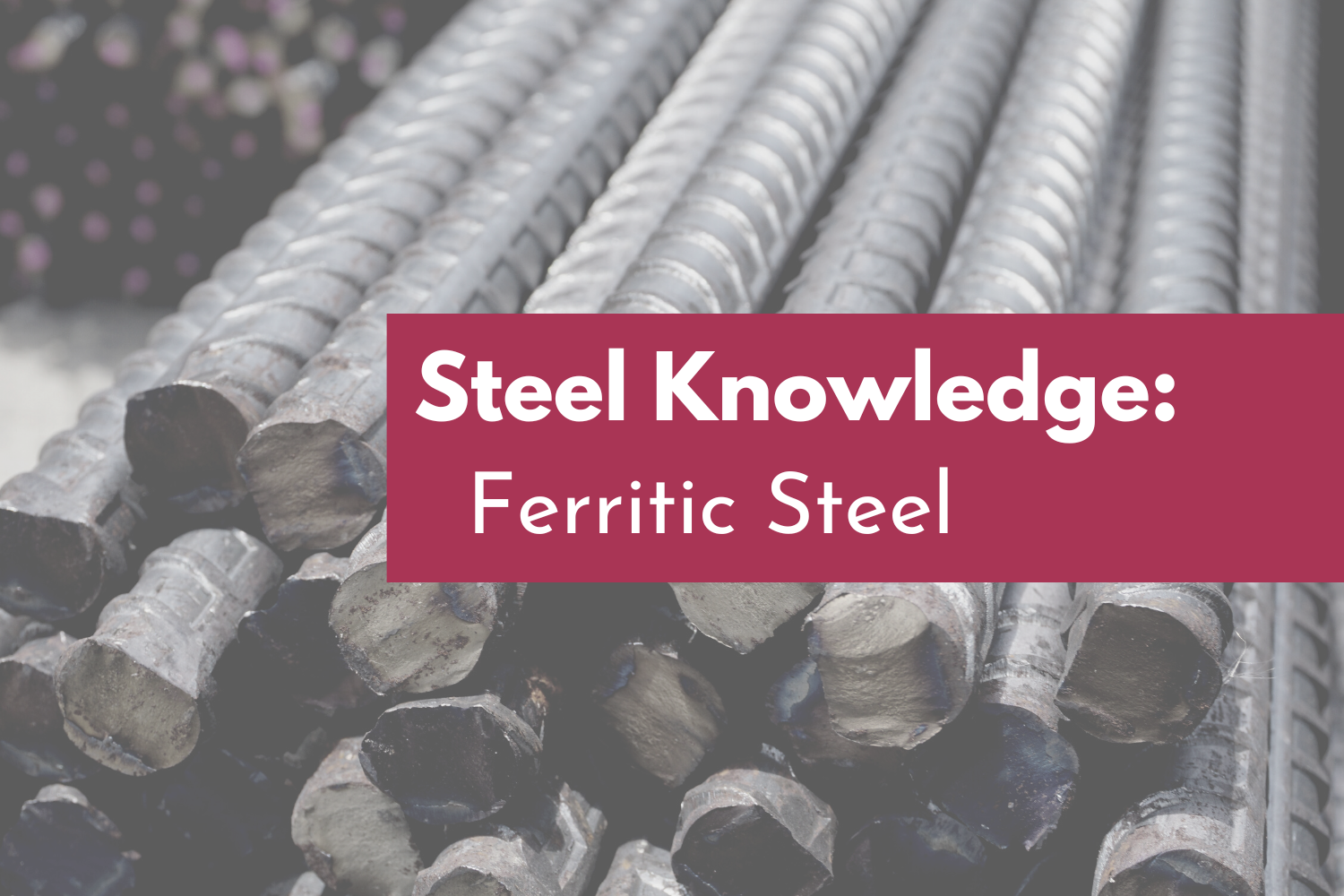What Exactly Is Ferritic Steel?
Ferritic steel has a carbon concentration of less than 0.20 percent and chromium values ranging from 10.5 to 30 percent. It is magnetic and cannot be heated to a hardness. This steel grade was created as a stainless steel set that can withstand corrosion and oxidation, particularly stress cracking corrosion (SCC).
The grades of ferritic stainless include 430, 430LI, 434, 439, 442, 444, and 446.
What Constitutes Ferritic Steel?
All varieties of stainless steel contain chromium, which is remarkable for its resistance to corrosion, hardness, and exceptionally smooth finish when polished. Ferritic steels are distinctive from other types of stainless steel in that they often include more chromium.
On the other hand, ferritic stainless steels can have chromium concentrations as high as 27%. However, not all ferritic stainless steels have high chromium content; in certain circumstances, they have even less than their austenitic counterparts.
Ferritic stainless steels differ from austenitic stainless steels in that they often contain little or no nickel. They have a similar property to martensitic stainless steels, the majority of which are nickel-free. Finally, the minimal carbon content in ferritic steels serves as a distinguishing feature.
Ferritic Grain Organization
The chemical makeup of stainless steel greatly influences its molecular structure. The names of the various varieties of stainless steel come from their structures. For instance, ferritic steels get their name from the microstructures known as ferrite that make up their composition.
The metallurgical phase of iron known as ferrite contains solid solutions of metallic alloying elements, although carbon is essentially insoluble. Although ferrite is essentially absent in quenched austenitic and martensitic stainless steels, its presence gives stainless steels their distinctive properties.
It's also important to remember that annealed martensitic stainless steels include ferrite and carbide.
Without delving too deeply into the science of metal creation, the main difference between the various stainless steel alloys is the location of the ionic bond in each grain. The grain structure of ferritic steels is a body-centered hexagon. However, the microstructures of austenitic and other stainless steel varieties are face-centered.
The magnetic property of ferritic steel, which distinguishes it from all other stainless steel forms, is due to the body-centered-cubic grain. This distinction is due to how the electrons are grouped at the center of the metal's grain, a quantum-mechanical feature of the metal's microstructures.
Attributes of Ferritic Stainless Steel
When considering how ferritic stainless steel performs, there are five key factors to be aware of:
- Steel with Stress Corrosion Cracking Resistance
A corrosive environment and tensile stress work together to cause stress corrosion cracking (SCC), a common kind of steel degradation. If exposed to chlorides, austenitic stainless steels are particularly susceptible to SCC. On the other hand, ferritic steels have microstructures that give them a high level of resistance to SCC, making them a good choice for usage in settings and uses where chlorides may be involved.
- High-Ductility and Formable Stainless Steel Grades
Carbon gives the steel its hardness, but carbon also makes the steel more brittle and less flexible. Ferritic steel often exceeds average flexibility because it has carbon levels as low as 0.03 percent. As a result, ferritic steels can be significantly molded without running the risk of failing.
Because of their low carbon content and outstanding formability, ferritic steels may be shaped into various shapes without encountering issues like cracking or necking.
The advantages of ferritic steel's low carbon content do, however, come with some trade-offs. For instance, heat treatment cannot be used to harden ferritic steels. Other issues with welding some ferritic steel types include unexpected cracking along the heat-effect zone.
- Stainless Steel Types with Low Thermal Expansion
Ferritic steels have a low thermal expansion index by nature. This means that ferritic steels will expand less when they absorb heat, which can be a big benefit. Ferritic stainless steels are ideal for high-temperature applications since the metal will easily hold its set size.
- High Thermal Conductivity Stainless Steels
Ferritic stainless steels have exceptional thermal conductivity properties, allowing heat to pass through them effectively. As a result, ferritic steels are frequently used in heat exchangers for furnaces and boilers, as well as other applications where heat must be transferred.
- High Oxidation Resistance Stainless Steel
Finally, ferritic stainless steel exhibits outstanding oxidation resistance, particularly at high temperatures. Developing a shielding chromium-oxide coating on the steel's surface gives it this resilience. When ferritic steel is produced, silicon and aluminum can be added to increase corrosion protection further.
Uses of Stainless Ferritic Steel
- For many of its purposes, the ferritic grades' magnetic characteristics are a significant benefit and enabler. This feature is used, for instance, in creating magnetic studs and thermal management in induction cookers.
- Ferritic alloys are better for thermophysical uses like cooking utensils because they have a higher thermal conductivity and a lower thermal expansion coefficient than austenitic grades.
- Some ferritic stainless steels have enough corrosion resistance to take the place of austenitic steel 304 in manufacturing dishwashers, kitchen sinks, and food processing machinery.
- Some specialty-grade ferritic stainless steels can withstand the corrosive effects of seawater because they contain more chromium and molybdenum.
- Due to their special set of attributes, ferritic stainless steels are advantageous in the automotive and nuclear industries.
Conclusion
Ferritic stainless steels are non-heat-treatable, magnetic steels with 11–30% chromium and little nickel. They are often used in non-loadbearing applications, such as marine applications, where there is a need for strong general corrosion resistance or good stress corrosion resistance (a regrettable synergy between stress and corrosion that leads to rapid failure). They have predominantly manufacturing and specialist applications, and are not used for cutlery or knife-making due to their low carbon content and lack of annealing capability.




